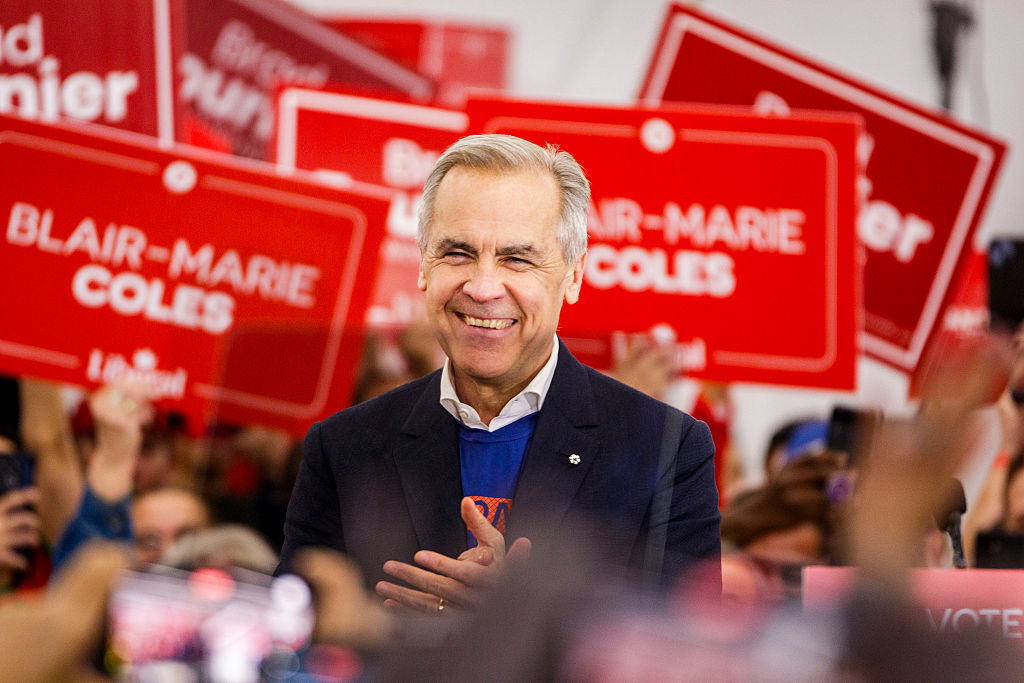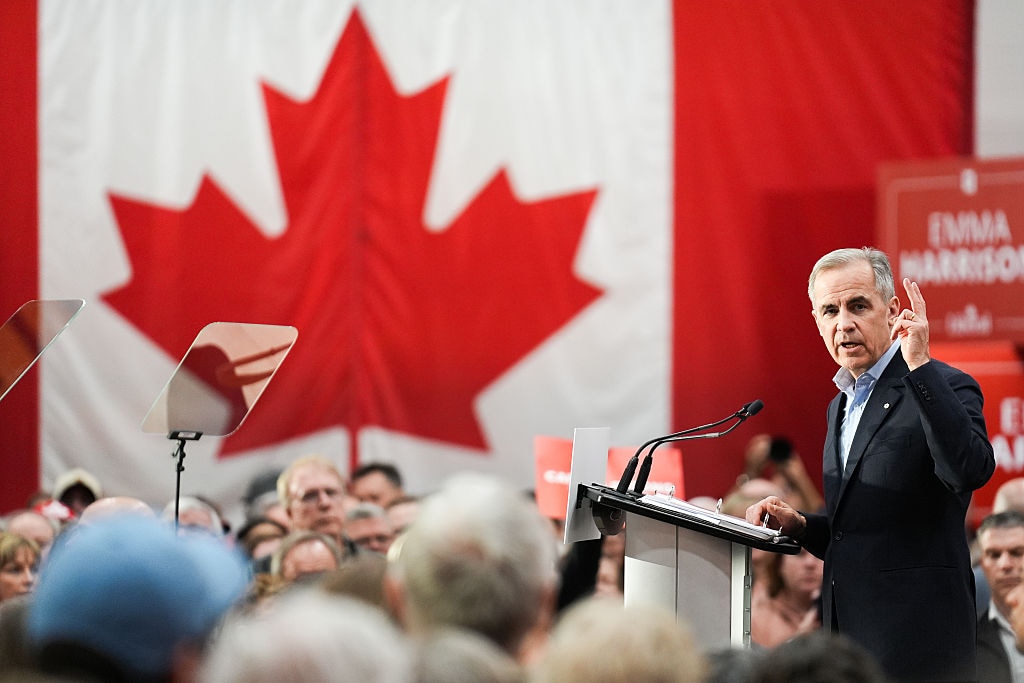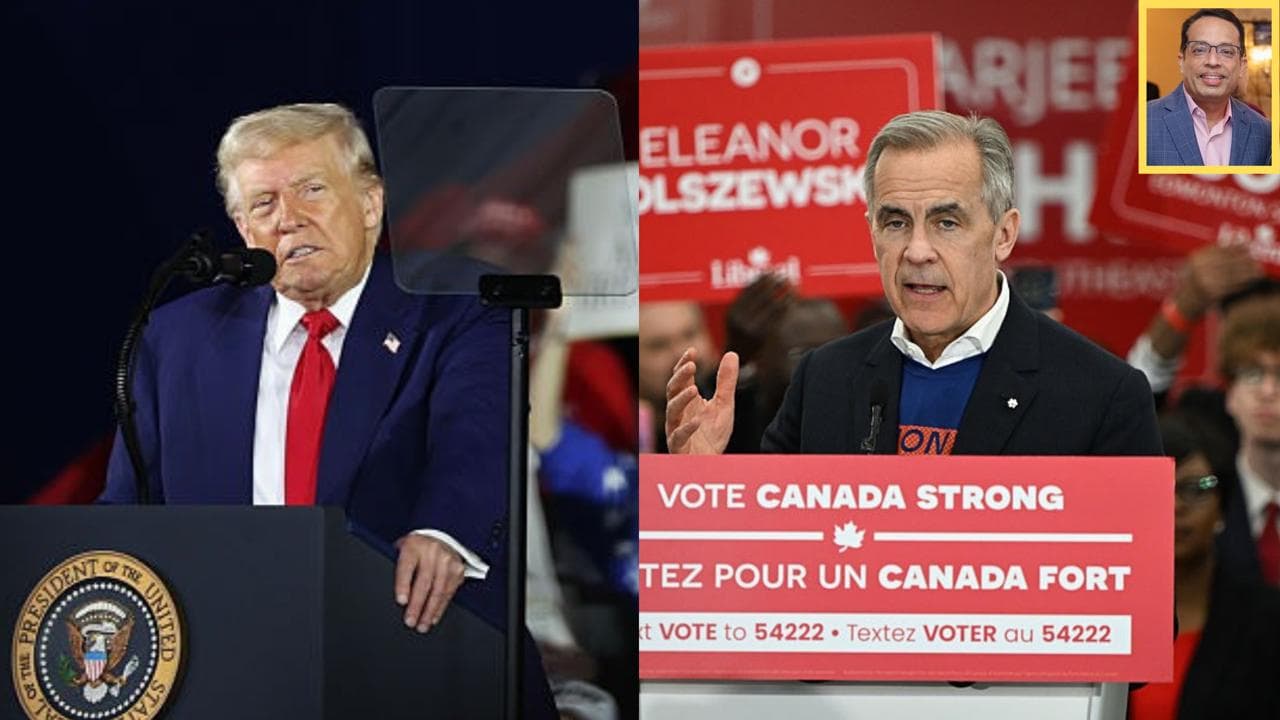Canada’s Liberals, led by Mark Carney, overcame a surging Conservative wave and Donald Trump’s shadow to secure a narrow election victory.
By Dr. Krishna Kishore – New York: Donald Trump was not on the Canadian ballots - but his aggressive stance against Canada dealt a knockout punch to Canada’s Conservative Party, who entered the national election campaign drawing inspiration from the political resurgence of U.S. President Donald Trump.

Trump’s Make America Great Again slogan metamorphosed into a ‘Canada First’ tagline for Pierre Poilievre. His incessant refrain—“Canada is broken under Justin Trudeau”—struck a chord with many Canadians frustrated by inflation and domestic challenges.
Poilievre’s promises to axe the carbon tax, defund the Canadian Broadcasting Corporation, crack down on crime, and fight the so-called “gatekeepers” blocking housing development helped him build a powerful Conservative coalition.
Just three months ago, most observers were confident that Poilievre would be Canada’s next prime minister. Polls showed the Conservative Party leading by as much as 30 points. Occupying the corridors of power in Ottawa was very much in sight for the Conservatives.
Meanwhile, sensing a precipitous decline in popularity, Prime Minister Justin Trudeau signaled in January that he was willing to step aside, and the Liberal Party began its search for a new leader.
During that period, Donald Trump returned to the White House—and quickly turned on Canada, once America’s closest ally and largest trading partner. In response, the Liberals chose a political newbie Mark Carney as their leader. A veteran central banker, Carney assumed the role of prime minister in March.

Carney recognized a political opportunity in Trump’s escalating rhetoric. As Trump announced tariffs on Canadian goods and brandished the idea of making Canada the “51st state of the U.S.,” public anxiety soared. The floundering Liberal Party seized the moment—and began to craft a dramatic comeback.
Carney hit back decisively. With bold economic countermeasures, he confidently rallied Canadians around a vision of sovereignty and stability. Within weeks, Conservative support plummeted.
The result? An extraordinary 30-point surge that propelled the Liberals to victory—one of the most stunning political turnarounds in Canadian history.
Poilievre’s hardline MAGA-style politics had long unsettled progressive voters. Trump’s provocations only deepened their concern. Left-leaning supporters of the NDP and Bloc Québécois began shifting their allegiance to Carney, seeing him as the best chance to keep Trump’s influence out of Canadian politics.
While Poilievre mocked Trudeau as “Governor Trudeau” and failed to counter Trump’s attacks, Carney’s credibility as a former Bank of Canada and Bank of England governor became a strength. In contrast to Poilievre’s aggressive tone, Carney’s steady demeanor reassured voters.
Ontario’s Conservative Premier Doug Ford, a one-time Trump ally, also played a crucial role in the Liberal resurgence. After winning a third term in February by pledging to shield Ontario from the growing U.S.-Canada trade war, Ford met Carney over breakfast in a Toronto diner in March. The image of a pragmatic alliance between the plainspoken populist and the polished banker sent a clear message: Carney was not another Trudeau.
Ford quietly signaled that Carney was economically competent and capable of defending Canada’s interests. That helped swing critical independent voters in the Greater Toronto Area.

Though portrayed as more centrist and business-friendly than Trudeau, Carney took a bold stance—pledging to increase public investment and strengthen Canadian manufacturing in response to the looming trade threats. His message: Canada must build its way out of economic vulnerability.
Even on election day, Trump couldn’t stay away. He sent a message to the “great people of Canada,” encouraging them to “join the United States as its cherished 51st state.” But Canadians weren’t buying it.
Trump wasn’t on the ballot, but he ended up as the night’s biggest loser. Trump’s characterization of Canada as a weak state unified people against the Conservatives - who view them as brethren to the Republican Party.
Trump’s lingering shadow made it relatively easy for the Liberals to eke out a win - despite not securing a clear majority. Carney now has to tread carefully to balance the power equation in Ottawa.
What is more telling is Pierre Poilievre himself lost in the elections - in the liberal resurgence he was swept away in rural Ottawa by Liberal candidate Bruce Fanjoy. Poilievre had first won the seat in 2004 and held it for two decades, only to lose when it mattered the most.
Mark Carney faces enormous expectations: to stabilize the economy, navigate international trade turbulence, and manage a complex relationship with the U.S.—and with Trump.
One thing is clear: Canadians have chosen sovereignty over subservience, and pragmatism over provocation. Carney’s mission is nothing short of defending Canada’s future.
And in doing so, he has redrawn the map of Canadian politics.


